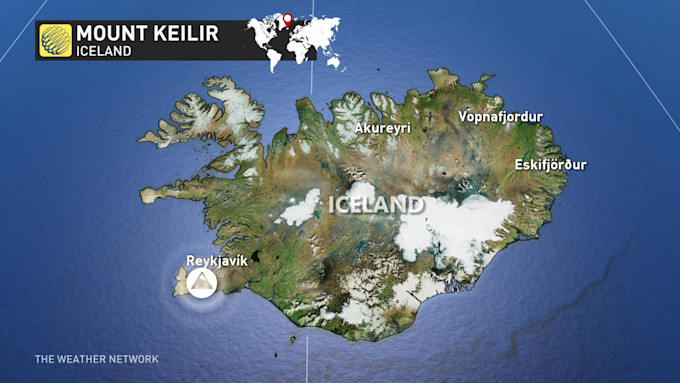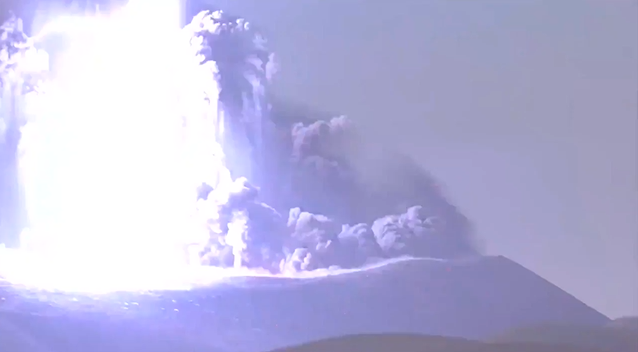Experts are not expecting impacts to international air travel if the volcano erupts
Source: The Weather Network
The Icelandic Meteorological Office (IMO) released an announcement on Tuesday that says they have detected a “sudden increase” in seismic activity near Mount Keilir and Litli Hrútur, which suggests a volcanic eruption could soon occur. Geological records indicate that the last volcanic eruption on the Reykjanes Peninsula was approximately 800 years ago.
Mount Keilir is located on the Reykjanes Peninsula and the IMO’s announcement says that “similar bursts of tremor have been observed ahead of previous volcanic eruptions in Iceland” and the recent activity is “likely” magma moving around underneath the Earth’s surface.
Reykjanes Peninsula connects Reykjavik, Iceland’s capital and largest city in the country, to Keflavík International Airport. The volcanic aviation colour code has been elevated from yellow (elevated unrest) to orange (heightened unrest).

Red is the highest level and indicates that there is an imminent or ongoing volcanic eruption. The latest announcement from the IMO says that “it has not been confirmed that an eruption has begun.”
As reported by Iceland Review, Víðir Reynisson, Director of the Civil Protection Department and Kristín Jónsdóttir, Natural Hazards Co-ordinator of the Icelandic Met Office and geophysicist Freysteinn Sæmundsson provided updates at an information briefing on Tuesday.
During the briefing, the experts said that it is difficult to estimate how long the eruption could last, but between one and two weeks is likely and that the eruption could consist of lava flow and explosive activity that is not expected to impact international flights.
The Reykjavík Grapevine Magazine reports that there is little threat to air traffic from volcanic ash if an eruption were to occur.
“Any lava emerging from the earth is likely to pour out of a fissure—rather than shoot out as part of a major explosive event—resulting in fewer particles being projected into the atmosphere. This fact reduces the chance of a repeat of 2010’s global air traffic chaos, when the eruption of Eyjafjallajökull created huge clouds of ash.”
Source: The Weather Network

































Leave a Comment
You must be logged in to post a comment.